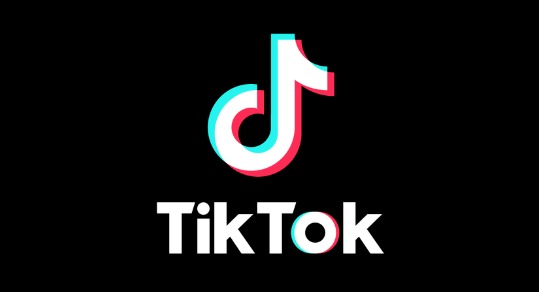The 2023 Women’s World Cup Championship: Celebrating Progress and Setting Priorities for the Future
The 2023 Women’s World Cup Championship is about to kick off in Australia and New Zealand, and it’s shaping up to be a historic event for gender equality in sports. For the first time ever, the US Women’s National Team (USWNT) will be paid the same amount as their male counterparts. This milestone is a testament to the progress we’ve made in leveling the playing field.
A Victory Lap for Gender Equality
The upcoming tournament is not just a soccer spectacle, but also a celebration of the progress we’ve made in women’s sports. The USWNT, known for their leadership on matters of equal pay and opportunity, will have the chance to defend their title and showcase a team filled with emerging talent. It’s a moment to recognize how far we’ve come and to identify the priorities for the future.
Challenging the Status Quo
Despite the incredible strides women have made in sports since the passage of Title IX legislation 50 years ago, there is still a prevailing belief that men are inherently better athletes. It’s time to challenge this status quo and recognize that women can excel in sports just as much as men.
Breaking Down Stereotypes
While there are physiological differences between men and women, it’s important to note that these differences are statistical rather than categorical. Yes, the tallest person in the world is a man, but many women are taller than many men. The same goes for athletic ability. The fastest person in the world may be a man, but many women are faster than many men. It’s time to break down these stereotypes and acknowledge that women can be just as capable in sports.
Looking Ahead
As we gather to watch the Women’s World Cup Championship, let’s celebrate the progress we’ve made and use this moment to set priorities for the future. It’s time to continue pushing for equal pay, equal opportunities, and equal recognition in sports. Together, we can create a future where gender equality is the norm, both on and off the field.Study Reveals Women’s Advantage in Athletic Performance
Did you know that women are more efficient at processing oxygen than men? According to a recent study, women are 30% more efficient at oxygen processing, giving them a clear edge in athletic competition. This means reduced muscle fatigue and perceived effort, leading to better performance.
But that’s not all. Women also have a distinct advantage in endurance events. For example, the best women’s times in long-distance swims are between 12% to 14% faster than the best men’s times, on average. This shows that women excel in endurance sports like long-distance swimming and dog sledding.
However, the popularity of certain sports may contribute to the perception of gender differences in athletic ability. The most popular sports worldwide, such as soccer or football, tend to exaggerate these differences. Imagine if marathon swimming received the same ratings as the Super Bowl – our assumptions about gender and athletic performance would be very different.
It’s not just physiological factors that influence athletic ability. Our social environments also play a significant role. From childhood, girls and boys are taught different movement patterns and skills. Girls often face restrictions in their movement, such as wearing skirts that limit their freedom. Research has shown that teachers and adults monitor girls’ movements more closely than boys’, leading to differences in how they develop their athletic abilities.
Even parents contribute to these differences. They tend to patrol the movement and risk-taking of their sons differently than their daughters. This early conditioning puts girls at a disadvantage even before they step onto the field or pick up a ball.
Unfortunately, these disparities in sports participation continue as girls grow older. Studies have found that girls in the US have a lower rate of sports participation than boys, and they drop out of sports at twice the rate by the age of 14. This trend is especially prevalent in marginalized communities.
For the girls who do stick with sports, they often face fewer opportunities to excel. This highlights the need for equal opportunities and support for female athletes.
In conclusion, the study’s findings shed light on the advantages women have in athletic performance. It’s not just about physiological differences but also the social and cultural factors that shape our perceptions of gender and athleticism. By understanding and addressing these factors, we can create a more inclusive and equitable sports environment for all.Girls in sports: The unequal opportunities and rewards they face
Did you know that girls have 1.3 million fewer opportunities to play high school sports than boys? This shocking statistic reveals a pattern of inequality that persists in communities across the country.
Lack of opportunities
For example, one young woman discovered that her community’s all-star soccer league had twice as many spots for boys as they did for girls. This disparity is just one example of the countless instances where girls are denied the chance to participate in sports.
Rewards for outstanding performance
Assuming a girl overcomes these obstacles and succeeds on the field, she will find fewer rewards for her outstanding performance compared to male athletes. The popular story of upward mobility, where male athletes work hard to pull themselves and their families out of poverty, is rarely seen in women’s sports. The average NBA player makes $5.3 million compared to the $130,000 of the average WNBA player. The disparity is even more stark at the elite levels.
Beyond salaries
Salaries are just one aspect of the rewards women receive less of than men. They are also less likely to get lucrative sponsorship deals, transition into post-sports careers, or be hired as coaches or work in front offices. The opportunities for women in the sports industry are limited compared to their male counterparts.
Imagining a different world
What would women’s sports look like in a world where gender differences in athletic performance were leveled, rather than exaggerated? How would women perform differently if they had the same opportunities as boys from a young age? These questions remain unanswered because we don’t live in a world where equality in sports is the norm. But that doesn’t mean we should stop asking these questions.
Rethinking gender and athletic performance
As we enjoy the spectacle of mega-athletes like Megan Rapinoe and Alex Morgan in 2023, it’s time to challenge our assumptions about gender and athletic ability. We should consider the possibility that men are not inherently better athletes than women, and that the rules of the game need to change in order to truly determine who excels. Let’s keep the conversation going and strive for a future where girls and women have equal opportunities and recognition in the world of sports.
Unveiling the Key Question as You Support America’s Soccer Stars in the Women’s World Cup
As the Women’s World Cup approaches, soccer fans around the globe are gearing up to support their favorite teams and players. Among the contenders, the United States women’s national soccer team stands out as a force to be reckoned with. With a rich history of success and a roster filled with talented athletes, the question arises: What does it mean to support America’s soccer stars in the Women’s World Cup?
First and foremost, supporting the U.S. women’s national soccer team means recognizing their achievements and contributions to the sport. Over the years, these athletes have consistently demonstrated their skill, determination, and passion for the game. From winning the inaugural Women’s World Cup in 1991 to securing their fourth title in 2019, the team has showcased their dominance on the international stage. By supporting them, fans acknowledge and celebrate their accomplishments, both individually and collectively.
However, supporting America’s soccer stars goes beyond simply cheering for them during matches. It also involves advocating for gender equality in sports. The U.S. women’s national soccer team has been at the forefront of the fight for equal pay and treatment in the sport. Despite their unparalleled success, these athletes have faced disparities in wages, resources, and opportunities compared to their male counterparts. By supporting them, fans contribute to the ongoing conversation about gender equality and help create a more equitable future for all athletes.
Furthermore, supporting the U.S. women’s national soccer team means appreciating the diversity and inclusivity they represent. The team comprises players from various backgrounds, ethnicities, and experiences, reflecting the multicultural fabric of American society. By embracing and celebrating this diversity, fans send a powerful message of unity and acceptance, both on and off the field. Supporting these athletes means supporting the values of inclusivity and equality that they embody.
In addition to these broader aspects, supporting America’s soccer stars also involves acknowledging the individual journeys and stories of the players. Each athlete has overcome personal challenges, sacrifices, and setbacks to reach the pinnacle of their sport. By learning about their stories, fans gain a deeper understanding of the dedication and resilience required to excel at the highest level. Supporting these athletes means appreciating their individual journeys and recognizing the human aspect behind their success.
As the Women’s World Cup unfolds, it is crucial to keep these key questions in mind. Supporting America’s soccer stars means more than just cheering for them on the field. It means recognizing their achievements, advocating for gender equality, embracing diversity, and appreciating their individual stories. By doing so, fans contribute to a more inclusive and equitable future for women’s soccer and sports as a whole.
In conclusion, as the Women’s World Cup approaches, supporting America’s soccer stars requires a comprehensive understanding of the broader implications of our support. It is not merely about the game itself, but about the values and causes these athletes represent. By standing behind them, we become part of a movement that strives for equality, diversity, and inclusivity in sports. So, let us unite in our support for America’s soccer stars and make a difference both on and off the field.









